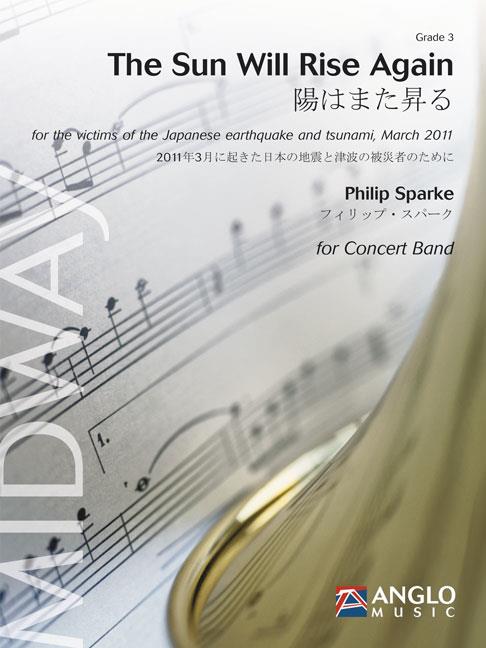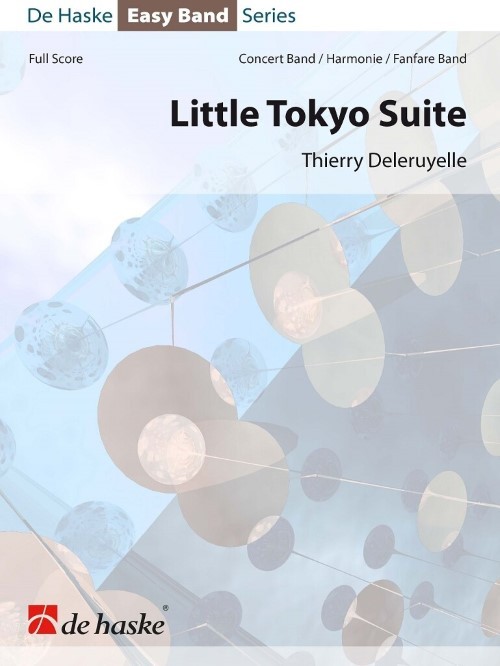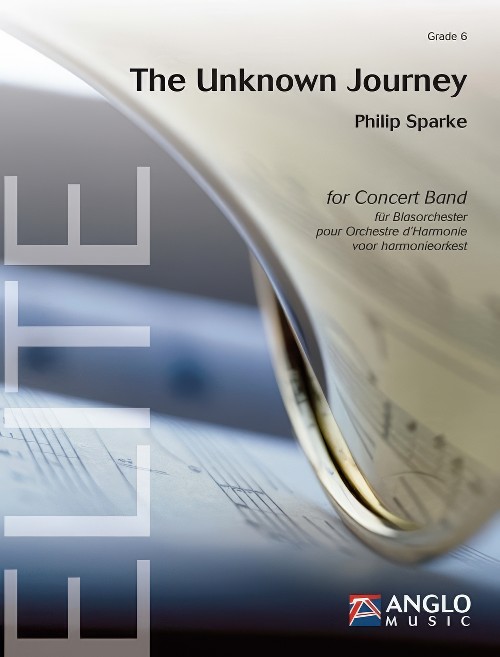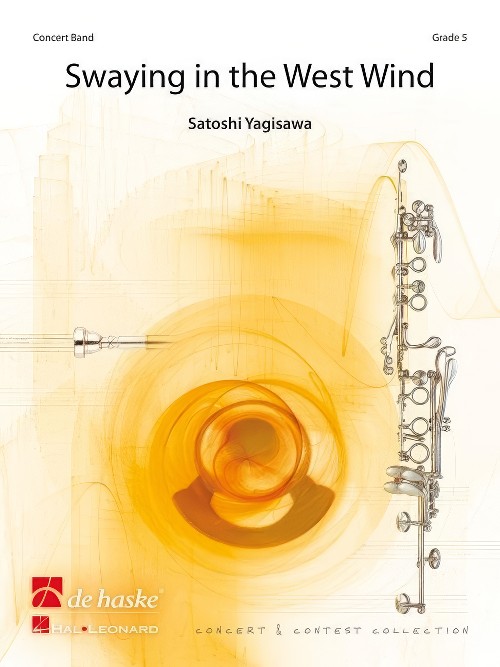Results
-
£71.00
-
 £60.00
£60.00Boog'in Japan - Jérôme Naulais
Estimated dispatch 7-14 working days
-
 £38.20
£38.20Japan - Jaroc
Estimated dispatch 7-14 working days
-
 £101.70
£101.70 -
 £184.99
£184.99Impressions Of Japan - James Barnes
Estimated dispatch 7-14 working days
-
 £91.99
£91.99The Sun Will Rise Again (Concert Band - Score & Parts) - Sparke, Philip
The composer writes:On March 11th 2011 a massive 9.0- magnitude earthquake occurred off the coast of north-eastern Japan. I'm writing these programme notes barely a week later and the death toll caused by the quake and resulting tsunami already exceeds 6000, with thousands of people still unaccounted for. I have many friends associated with many bands throughout Japan and one of these, Yutaka Nishida, suggested I write a piece to raise money to help those affected by the disaster. I was immediately attracted by the idea and have arranged Cantilena (a brass band piece recently commissioned by the Grenland International Brass Festival, Norway) for wind band, giving it a new title to honour my friends in the Land of the Rising Sun. I will be donating royalties from this piece to the Japanese Red Cross Society Emergency Relief Fund and am delighted to say that my distributors, De Haske, who will generously also donate all net profits from sales of this piece, have pledged a substantial advance payment to the Red Cross so that what little help this project generates can be immediate. It is my sincere wish that this 'Band Aid' project will allow wind bands around the world support the people of Japan, where bands are a way of life for many, in this difficult time.- Philip SparkeDuration: 4:30
Estimated dispatch 7-14 working days
-
 £91.99
£91.99The Sun Will Rise Again - Philip Sparke
The composer writes:"On March 11th 2011 a massive 9.0- magnitude earthquake occurred off the coast of north-eastern Japan.I'm writing these programme notes barely a week later and the death toll caused by the quake and resulting tsunami already exceeds 6000, with thousands of people still unaccounted for. I have many friends associated with many bands throughout Japan and one of these, Yutaka Nishida, suggested I write a piece to raise money to help those affected by the disaster. I was immediately attracted by the idea and have arranged Cantilena (a brass band piece recently commissioned by the Grenland International Brass Festival, Norway) for wind band, giving it a new title tohonour my friends in the Land of the Rising Sun.I will be donating royalties from this piece to the Japanese Red Cross Society Emergency Relief Fund and am delighted to say that my distributors, De Haske, who will generously also donate all net profits from sales of this piece, have pledged a substantial advance payment to the Red Cross so that what little help this project generates can be immediate.It is my sincere wish that this 'Band Aid' project will allow wind bands around the world support the people of Japan, where bands are a way of life for many, in this difficult time".Philip Sparke
Estimated dispatch 7-14 working days
-
 £84.99
£84.99Little Tokyo Suite (Concert Band - Score and Parts) - Deleruyelle, Thierry
Little Tokyo Suite is a work in three movements for wind ensemble, with a flexible 10-part orchestration suitable for concert band or fanfare band. It portrays the "Japantowns" established by Japanese emigrants around the world. They are often called "Little Tokyo", in reference to the capital of Japan. The three movements each focus on a region with such a Japanese community. This suite is dedicated to the concert band of the conservatory of the 12th arrondissement of Paris, whose conductor is a lover of Japanese culture, and to Mochizuki Junior High School, Saku City (Nagano, Japan).Duration: 7.15
Estimated dispatch 7-14 working days
-
 £256.99
£256.99The Unknown Journey (Concert Band - Score and Parts) - Sparke, Philip
The Unknown Journey was commissioned by Kwansei Gakuin University Symphony Band which was established in 1954 and has grown to become one of the top college bands in Japan. The composer chose the title as the piece seemed to create its own momentum as it developed, starting slowly and continuously increasing the tempo. Towards the end it gradually transmogrifies into the closing bars of Ravel's La Valse, a piece which perfectly characterises the idea of unstoppable momentum. The Unknown Journey was commissioned by Kwansei Gakuin University Symphony Band which was established in 1954 and has grown to become one of the top college bands in Japan. The composer chose the title as the piece seemed to create its own momentum as it developed, starting slowly and continuously increasing the tempo. Towards the end it gradually transmogrifies into the closing bars of Ravel's La Valse, a piece which perfectly characterises the idea of unstoppable momentum.Duration: 11:30
Estimated dispatch 7-14 working days
-
 £154.99
£154.99Swaying in the West Wind (Concert Band - Score and Parts) - Yagisawa, Satoshi
This piece was commissioned by Japan Ground Self Defense Force Western Army Band. In the programme note for the premiere the composer wrote: "I am always impressed by the expansive earth and sparkling ocean scenery when I come to Kyushu. I have met many local people here and they are all expressive and energetic. I wrote this dramatic piece to convey to the whole of Japan the memory of my experience here, swaying in the west wind. I wrote this, hoping that the Self Defense Force will forge closer ties with the community through this piece." Eastern drama felt in the west wind!Duration: 8:00
Estimated dispatch 7-14 working days
